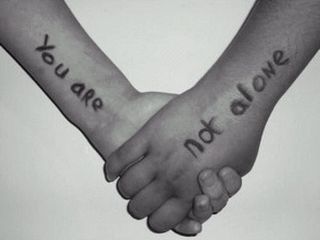Suicide
Suicide Rates, Even Among Children, Are Rising Dramatically
What can explain the suicide epidemic?
Posted January 28, 2019

Did you know that the U.S. suicide rate has skyrocketed over the last decade and that more than 45,000 people are taking their own lives annually? Did you know that even children under the age of eleven are committing suicide at an increasing rate? In fact, suicides among children under the age of eleven more than doubled in the last ten years.
Approximately 125 people complete suicide in the U.S. every day. Incredibly, an additional 1,000+ per day attempt suicide and do not complete it.
There are now nearly three suicides for every murder committed in the U.S. Suicides also outnumber deaths in motor vehicle accidents. To put it in perspective, there are currently about 17,000 murders, 38,000 auto fatalities and 45,000 suicides in the U.S. annually.
The federal statistics reveal that suicide demographic patterns are changing in the U.S. Suicide is no longer concentrated among isolated, elderly Americans and, to a lesser extent, troubled teenagers. It has been dramatically on the rise among middle-aged Americans. There has also been a dramatic increase in suicides among veterans of the Iraq and Afghanistan wars.
As reported in The New York Times in 2018, suicide rates rose steadily in nearly every state from 1999 to 2016, increasing 25 percent nationally, the Centers for Disease Control and Prevention reported (1). In 2016, there were more than twice as many suicides as homicides. Suicides among middle-aged Americans have risen sharply in the past decade.
Social isolation, lack of mental health treatment, drug and alcohol abuse and gun ownership are among the factors that contribute to suicide. Although most suicides are still committed using firearms, CDC officials have said there was a marked increase in poisoning deaths, which include intentional overdoses of prescription drugs, and hangings.
"Suicide is the tenth leading cause of death in the United States, and one of three that is increasing. The other two are Alzheimer’s disease and drug overdose, in part because of the spike in opioid deaths," said Dr. Anne Schuchat, principal deputy director of the C.D.C. "Firearms were by far the leading method, accounting for about half of suicides. That number has remained steady over recent decades," she said (1).
I am a sociologist and criminologist. I have been using my training and skills in research to analyze the dramatic rise in suicide in the U.S. I have been exploring a theory about suicide first articulated by Emile Durkheim in the nineteenth century.
Emile Durkheim was a legendary social scientist, and considered the founding father of sociology. He argued that suicide is not an individual pathology; rather, it is the result of social forces or societal conditions. His argument was revolutionary and very controversial in the nineteenth century.
Using a vast amount of data from official records on suicides in different parts of Europe, Durkheim documented significant variations between countries in their rates of suicide. He discovered that each country’s rate of suicide was highly correlated to endemic environmental factors such as the levels of poverty and crime.
The evidence, Durkheim argued back in 1897, shows that “each society has a definite aptitude for suicide” which is a social fact that is external to the individual members of a given society.
I have spent considerable time analyzing recent suicide patterns in the U.S., and I have concluded that, consistent with the theory of Emile Durkheim, suicide is indeed a social fact—that is, a predictable pattern based on social forces and prevailing conditions.
Moreover, I contend that there are corrosive social forces currently at work in the U.S. that can explain the sharply rising suicide rate.
These social forces include widespread financial fears and increasing poverty; lack of medical insurance and caregiving concerns; distrust of the government; political divisiveness; cultural, racial and religious strife; increased gun violence and constant war since 2001. These factors have all led to alienation, anger and a feeling of hopelessness among a large segment of the population.
I contend that these alienating social forces over the past decade have made suicide the new murder as frustrated and fearful Americans increasingly turn their anger onto themselves and take their own lives in unprecedented numbers.
Making the situation worse is the fact that the current suicide epidemic is practically invisible to the public. That is because the dominant American ideology of individualism, based on the Protestant ethic, precludes an open discussion about suicide as a serious social problem. The Protestant ethic would suggest that someone who commits suicide is morally weak and, therefore, responsible for his/her own fate.
As a society, we must stop treating suicide like a dirty, little secret. We must agree to discuss this increasing problem openly and honestly. Most importantly, we must exorcise the stigma associated with suicide from our collective consciousness.
The only way that we can find solutions to the growing suicide problem is to initiate a national dialogue about it and deal in facts rather than fictions.
If you or someone you know needs help, visit the National Suicide Prevention Lifeline or call 1-800-273-TALK (8255).
References
(1) Carey, Benedict. "Defying Prevention Efforts, Suicide Rates are Climbing Across the Nation." The New York Times, June 7, 2018.




